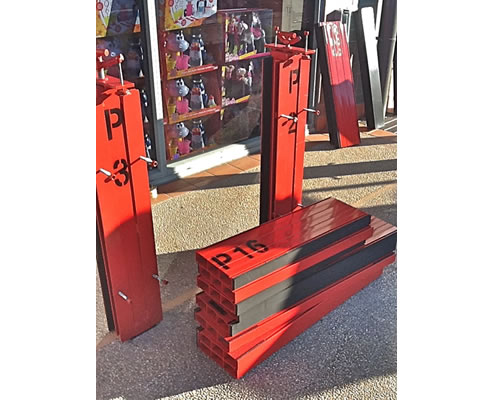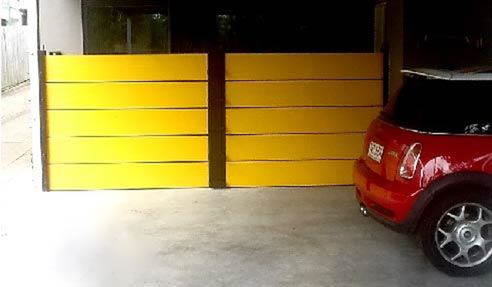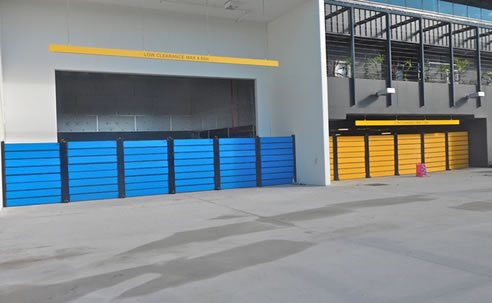Flood protection barriers are the calling card of Flooding Solutions. Most of the Australian population resides on coastal floodplains. Hence, Flooding Solutions has sought to combat the adverse impacts of flooding with sophisticated technologies.
With a commitment to quality, the product development team at Flooding Solutions has carefully curated a versatile catalogue of flood protection barriers and systems. One of the most in-demand products is Floodplank.
Floodplank serves as a temporary flood wall, while offering comparable performance to permanent, in-built flood protection barriers. The system is designed as stacked "Floodplanks" on top of each other to provide a barrier against rising floodwaters. The demountable products are fabricated from robust extruded aluminium to deliver optimum, long-lasting performance.

The application of the Floodplank system can be carried out by a single individual following these guidelines:
1. The surface of the pavement must be free from dust and dirt at the vertical and base area where the flood protection barriers and stanchions will be prepared for positioning.
2. The cover of the wall connector must be removed. Floodplank will then be fitted by sliding the clamping plate out of grooves at the top of the wall connection. The screws of the vertical clamp must be loosened to open the clamp and accommodate the flood protection barriers.
3. The floor coupling cover plate must be removed before positioning the stanchion above, making sure the T-bar is aligned with the coupling slot.
4. The stanchion should be fully inserted into the floor coupling, at which point the T-bar is rotated to lock it into position. The alignment of the stanchion must be confirmed with the Floodplank line. Additionally, the top clamping plate must be positioned 90 to Floodplank insert gap on each side of the stanchion.
5. The stanchion must be partially clamped down to the pavement or floor surface by turning the butterfly screw in a clockwise direction.
6. The first Floodplank should be placed against the pavement, stacking to the system height. The smooth seal side of the planks must be facing the vertical seals on the stanchion and wall connectors.
7. All planks must be in position before rotating the top clamping plate on the stanchion. The clamping disc should be in position over the top plank. Meanwhile, the clamping plate should be returned to the grooves in the upper part of the wall connector with similar adjustment to the stanchion.
8. The adjustment screws of the wall connection and stanchion must be turned to vertical clamp angles until all Floodplanks are firmly positioned.
9. The stanchion must be clamped down to the floor with a half-to-full turn of the tube spanner after the stanchion wing nut has been tightened by hand.
10. The top clamping disc should be tightened down until all plank base seals are in full contact with the lower plank on the floor.
11. The clamping disc must be tightened until the vertical seals on the Floodplanks and wall connectors start to bulge.
12. The bottom angle support should be tightened against the pavement.
For more information on demountable flood protection barriers, go to the official website of Flooding Solutions at www.floodingsolutions.com.au today.







 Glass Window Flood Barriers by Flooding
Glass Window Flood Barriers by Flooding Self Closing Flood Roller Barrier for
Self Closing Flood Roller Barrier for Flood Protection Barriers Queensland
Flood Protection Barriers Queensland Entry Flood Barriers for Parramatta
Entry Flood Barriers for Parramatta Organic Self-closing Flood Barriers from
Organic Self-closing Flood Barriers from Automatic Recessed Flood Barriers from
Automatic Recessed Flood Barriers from Automatic Drop-down Flood Barriers from
Automatic Drop-down Flood Barriers from Flood Barriers for Heavy Vehicle Areas
Flood Barriers for Heavy Vehicle Areas Passive Flood Barriers for Apartments by
Passive Flood Barriers for Apartments by Expanding Panel Floodgates from Flooding
Expanding Panel Floodgates from Flooding Flood Roller Doors for Medical Centres
Flood Roller Doors for Medical Centres Hyflo Passive Flood Barriers for
Hyflo Passive Flood Barriers for 24/7 Flood Doors Approved Nationwide
24/7 Flood Doors Approved Nationwide Flood Protection for Monash Medical
Flood Protection for Monash Medical High End Retail Drop Down Flood Barriers
High End Retail Drop Down Flood Barriers Automated Drop-Down Flood Barriers from
Automated Drop-Down Flood Barriers from Low Profile Flood Barriers for
Low Profile Flood Barriers for Hyflo Self Closing Flood Door from
Hyflo Self Closing Flood Door from 24/ 7 Flood Doors for Buildings |
24/ 7 Flood Doors for Buildings | How do Hyflo Self Closing Flood Barriers
How do Hyflo Self Closing Flood Barriers
